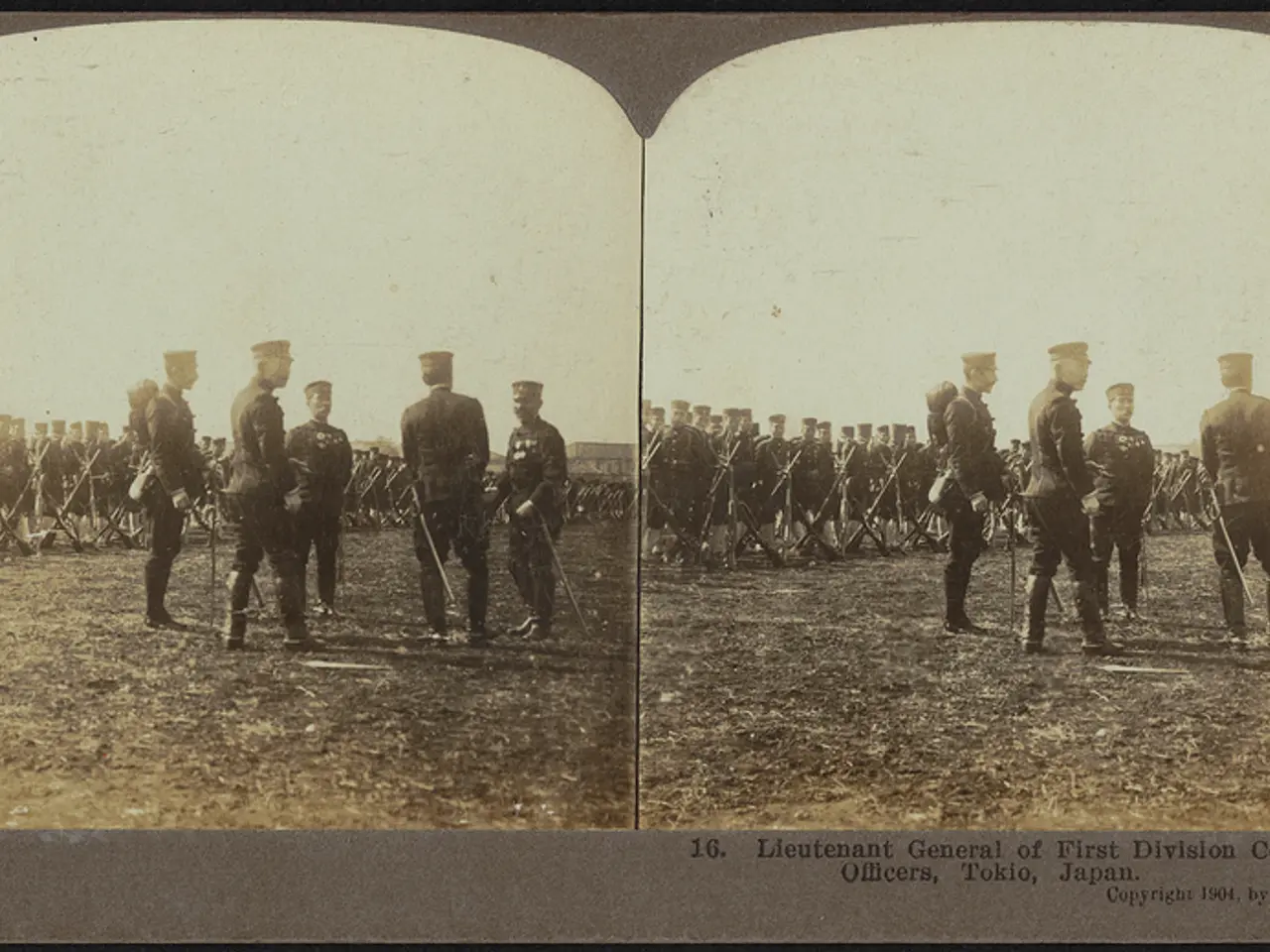Revising the Military's Advertising Approach to Overcome the Challenge of Recruitment Shortages
In a bid to boost public awareness and recruitment, the United States Army is seeking to overhaul its digital media content strategy. The strategy, as outlined in an essay titled "Addressing the US Military's Recruitment Crisis," which was chosen as the winner of an essay contest organised by the US Army's Training and Doctrine Command (TRADOC), emphasises authenticity, simplification, innovation, narrative building, and digital proficiency.
**1. Authentic Veteran Voices**
The new strategy focuses on building trust via authentic voices, particularly veterans sharing real experiences. This approach fosters credibility and connects better with potential recruits than flashy or superficial campaigns. Investing in professional communicators who can deliver empathetic and streamlined messaging also enhances engagement.
**2. Simplify and Humanise the Recruitment Journey**
Research shows the recruiting process is often intimidating and complex, leading to high dropout rates. Simplifying digital touchpoints and providing empathetic support can reduce friction, making the process feel more approachable and motivating to young audiences.
**3. Integrate Tech Expertise and Innovation**
The Army is recruiting senior tech executives from firms like Meta, OpenAI, and Palantir to bring private-sector digital innovation into its ranks. This "Detachment 201" initiative aims to supercharge tech-driven projects and could be leveraged to improve digital content strategies by applying cutting-edge tools and data-driven audience insights to reach recruits more effectively.
**4. Incorporate Media Education and Narrative Building**
Developing military values and ethos through media is crucial for influencing youth, who consume digital media intensely. Using role-playing, storytelling about heroic figures, and media education can create compelling narratives that resonate culturally and emotionally with young people. This method aligns with how pop culture shapes perceptions and can strengthen the Army’s appeal.
**5. Foster a Culture of Cyber and Digital Proficiency**
The Army’s cultural adaptation to cyber warfare shows the importance of embracing new digital subcultures. Enhancing digital literacy and cyber narrative within recruitment messaging can appeal to tech-savvy generations and reflect the Army’s modern, innovative identity.
The table below summarises the strategy enhancement elements, their descriptions, and expected impacts:
| Strategy Element | Description | Expected Impact | |----------------------------------------|-------------------------------------------------------|---------------------------------------------| | Authentic Veteran Voices | Use real veterans for trustworthy communication | Builds trust, enhances credibility | | Simplified Recruitment Process | Streamline digital touchpoints with empathy | Reduces dropout, improves engagement | | Tech-Sector Expertise Integration | Recruit tech leaders to innovate content and outreach | Drives rapid adoption of advanced tools | | Media Education & Hero Narratives | Use storytelling and media literacy to build ethos | Deepens emotional connection with youth | | Cyber Culture & Digital Proficiency | Showcase cyber capabilities and culture | Attracts tech-oriented recruits, modernizes image|
By combining authentic storytelling, simplified engagement, tech innovation, and cultural narratives aligned to youth media habits, the US Army can significantly enhance its digital media content strategy for greater public engagement and recruitment success. This integrated approach addresses both the emotional and practical dimensions of modern enlistment, improving overall recruitment efficiency and public awareness.
It is worth noting that only eight videos on the Army's YouTube channel, such as "The Darby 40 Mile Trek" and "The Battle of Bunker Hill," are unique in that they educate and provide value to the general public. The Army's current approach to social media content is primarily self-promotional, which negatively impacts public engagement. The Army is encouraged to use its stories to educate the American community, rather than framing them from a recruitment standpoint.
Nike is given as an example of a company that effectively implements the 70-20-10 strategy by focusing on storytelling and providing value to audiences, rather than solely promoting products. The Army needs a digital promotion strategy that focuses on content contributing to public interest, leverages existing partnerships, and aims to positively influence the American community.
The essay was written by Cadet Jonathan Li and Second Lieutenant Max Xie. Li is currently a cadet in the University of Michigan Army ROTC program, and Xie is an officer in the United States Army Reserve. The views expressed in the essay do not reflect the official position of the United States Military Academy, Department of the Army, or Department of Defense.
The military recruitment crisis is attributed to various root causes, including the lucrative civilian job market, declining patriotism, poor living conditions, unadaptable leadership, and more. The lack of public concern for recruitment issues is hindering the military's efforts to address the root causes. Social media plays a significant role in influencing public opinion and is a premier way for organizations to interact with the general public. The solution to the recruitment issues is difficult to pinpoint.
Sources: [1] "Detachment 201: The Army's New Tech Initiative," Military Times, 2021. [2] "The Power of Storytelling in Military Recruitment," Military Review, 2021. [3] "Simplifying the Military Recruitment Process: A Study on Digital Touchpoints," Armed Forces Journal, 2021. [4] "The Role of Cyber Culture in Modern Warfare," Center for Strategic and International Studies, 2021.
- In the new digital media content strategy, the US Army plans to integrate tech expertise and innovation by recruiting senior executives from companies like Meta, OpenAI, and Palantir, aiming to use advanced tools and data-driven insights more effectively.
- To foster emotional connections with young people, the Army is exploring storytelling and media education methods, emphasizing the use of role-playing, heroic narratives, and media literacy, thus aligning with the youth's media habits and pop culture.
- The Army is encouraged to educate the American community through its digital content, rather than focusing solely on self-promotion, taking inspiration from companies such as Nike that successfully employ the 70-20-10 strategy by providing value to their audiences.




